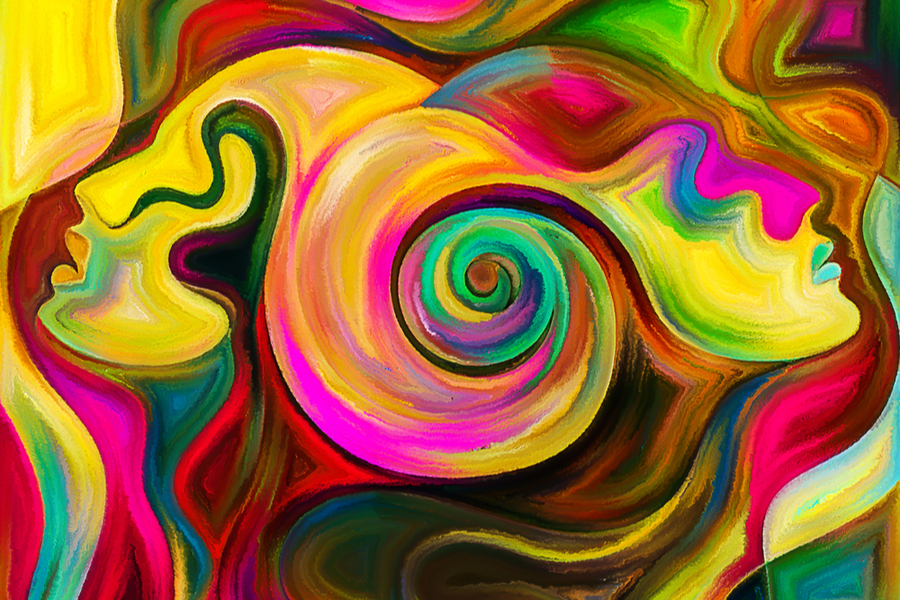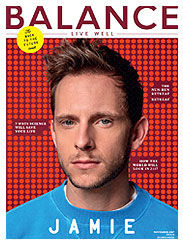The Psychology Behind Colour

“Colour is my day-long obsession, joy and torment.” – Claude Monet. It’s not hard to see where Monet was coming from. Perhaps not the torment part (although ask anyone who’s tried to paint a perfect “greige” wall and they may disagree), but that sense of deep, daily enchantment with colour — it resonates.
From the instant we wake up and shuffle to the kettle, to what we wear, eat, buy or scroll past, colour is a constant, powerful force in our lives. It’s not just visual decoration — it’s emotional shorthand. And while most of us don’t consciously think about it, we are always reacting to it. In fact, studies show up to 80% of the decisions we make about colour happen subconsciously.
Colour cues influence everything from the cereal box we reach for in the supermarket to how relaxed we feel in a yoga class, to the level of trust we subconsciously assign to a stranger wearing a certain shade of blue. And with so much of modern life lived through screens and brands, algorithms and aesthetics, it’s never been more important to understand the role colour plays in our lives — and how we can harness it for good.
Seeing, feeling, reacting: Why colour isn’t just visual
My own fascination with colour led me to specialise in the field of applied colour and design psychology — an area that merges aesthetics, neuroscience, and emotional wellbeing. It’s not about “colour theory” in the art school sense, or seasonal wardrobe charts (though both have their place), but about how colour influences human behaviour, mood, and motivation.
It’s the reason hospitals are slowly replacing sterile grey corridors with calming greens and soft peachy tones. It’s why some tech brands are now pivoting from aggressive reds to cooler lavenders and lilacs. It’s also why so many wellness spaces today lean into earthy neutrals and botanical palettes — they instinctively feel safer, softer, and more nourishing to the nervous system.
When we encounter a new space, image, brand or person, colour hits our brains first. Before we read the logo, analyse the body language, or take in the clever messaging, we’ve already formed an emotional impression.
Colour doesn’t ask us to think. It just makes us feel. That’s its power — and its subtlety.
The emotional side of colour
We like to believe we make rational decisions — especially when it comes to how we spend money, who we vote for, or what we invite into our homes. But most of our choices, especially purchases, are driven by emotional triggers.
Afterwards, we rationalise: “It was on sale.” “It’s better quality.” “It goes with everything.” But the reality is that up to 85% of our purchasing decisions are influenced by colour alone.
So when brands get colour wrong — when the tone of their marketing doesn’t match the tone of their visuals — we feel it immediately, even if we don’t always understand why. A luxury brand in garish colours? It jars. A wellness app using neon reds? Stressful. A childcare brand in stark monochrome? Off-putting.
Colour needs to support the message, not compete with it. It’s why successful brands feel emotionally “right” — they’re visually aligned with what they promise.
Politics in technicolour
And it’s not just brands. Politics, too, is a colour-coded landscape. In the UK, each major party has its symbolic hue: blue for the Conservatives, red for Labour, yellow for the Liberal Democrats. These aren’t just recognisable signposts — they’re emotional signals.
Here’s how it plays out:
-
Conservative Blue: Dark navy suggests tradition, loyalty, and authority — a dependable dad-in-a-suit kind of energy. But overuse or misalignment (like when trust erodes) can also feel distant or emotionally cold.
-
Labour Red: Bold, punchy, and impossible to ignore. Red speaks of activism, urgency and conviction — it’s the colour of protest as much as power. But too much can be overwhelming, even anxiety-inducing.
-
Lib Dem Yellow: Cheerful and sunny, yellow taps into optimism and open-mindedness. It feels fresh, approachable, reformist. But handled clumsily, it can tilt into flakiness or lack of seriousness.
What’s fascinating is how these colours can flip depending on the emotional narrative we attach to them. In times of crisis, the same “trustworthy blue” can feel aloof. A “radical red” can feel necessary. A “sunny yellow” might suddenly seem naïve. It’s not the colour that changes — it’s us.
Designing for wellbeing
The psychology of colour is also playing a growing role in wellness design — from public health spaces to homes, schools and offices. Post-pandemic, we’re seeing a rise in biophilic colour palettes (those inspired by nature), as people seek calm, grounding environments.
Green, for example, is often used to restore balance — it’s associated with growth, healing, and connection. Earthy browns suggest safety and stability. Soft pinks can soothe our nervous system, while lavender tones are now being explored for their potential in anxiety reduction.
Even in our homes, colour can offer subtle support. Muted terracottas in a dining space can stimulate appetite and conversation. Cooler tones in bedrooms can promote rest. Yellow in moderation can lift mood in gloomy hallways — but overdo it, and it can irritate.
It’s not about painting every wall in a chakra-aligned gradient. It’s about tuning into what you need from your environment, and using colour intentionally to support that.
Colour is personal — and that’s the point
Somewhere along the way, colour became something we felt we had to get “right”. But here’s the truth: there is no right. There’s only what feels right to you.
There’s a common misconception that if you like a colour, you have to go all in — but that’s not how colour works. You don’t have to live in a turquoise house to enjoy the emotional boost it gives you. You can add it in small, meaningful ways — a cushion, a mug, a jumper, a notebook.
We don’t need every colour all the time. Just the ones that support how we want to feel, when we need them most.
In a world that often feels fast, fragmented and filtered, colour offers something beautifully simple: a direct line to how we feel. It grounds us in the present. It sparks memory, emotion, energy. It gives us the chance to curate our space, our brand, our message — even our mood.
So forget what’s trendy, or tasteful, or “timeless.” Ask yourself instead: What do I need more of in my life? Calm? Energy? Joy? Focus? Then let colour do the rest.
Because whether you’re painting a wall, choosing a scarf or casting a vote, colour is never just about what we see — it’s about what we feel.








